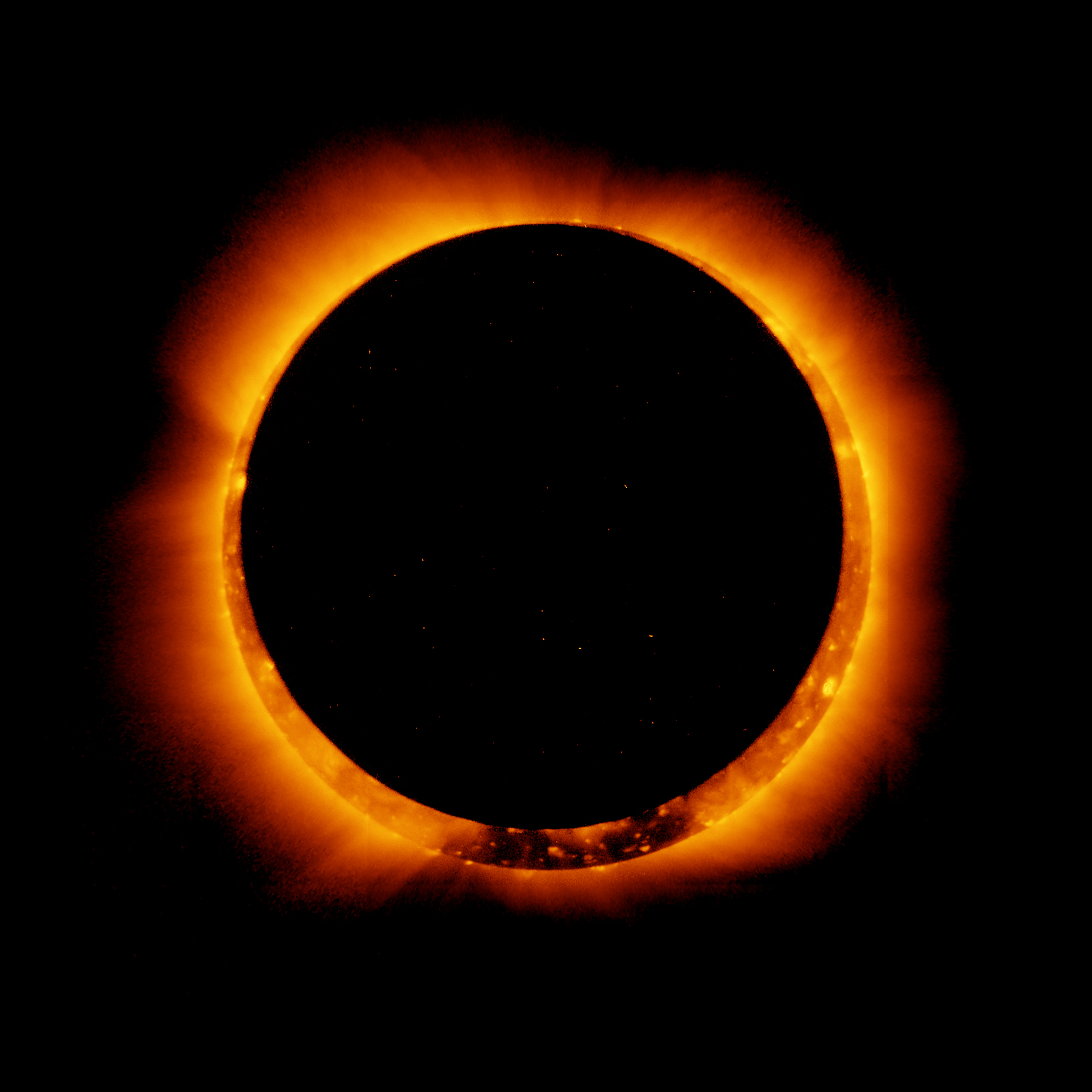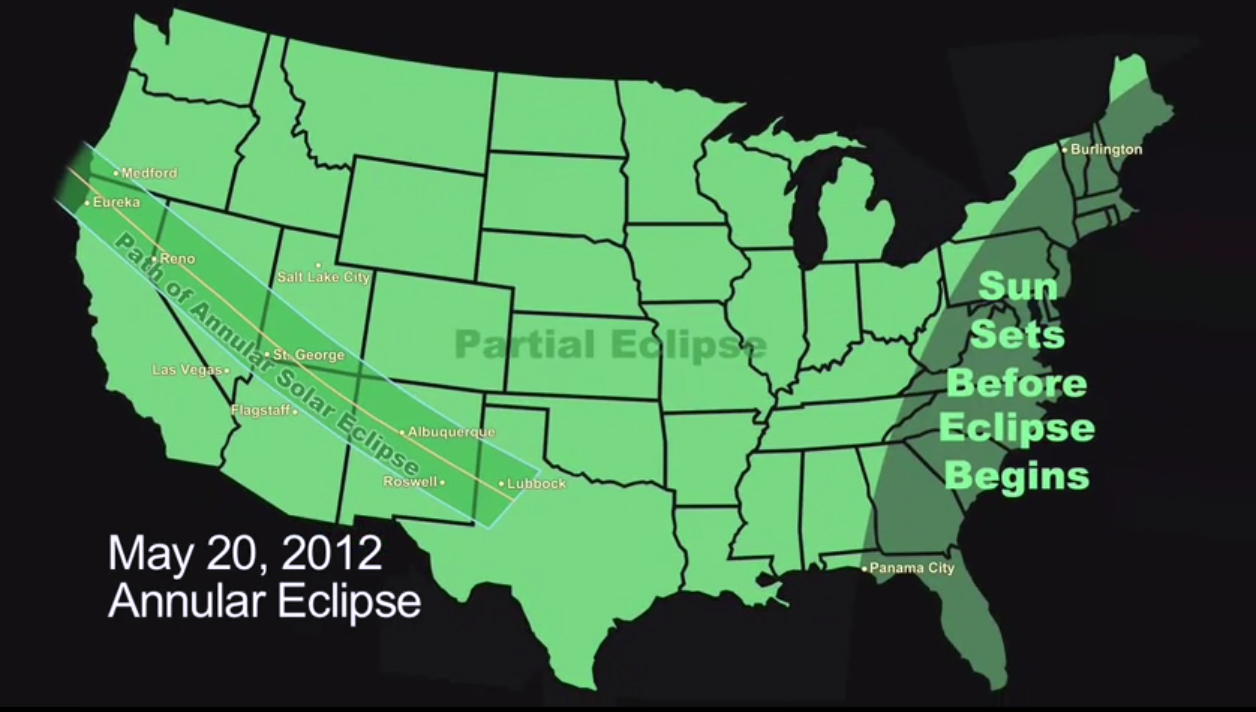'Ring of Fire' Solar Eclipse Occurs May 20

UPDATE: For the latest tips and advice on seeing the May 20 solar eclipse, see: Annular Solar Eclipse of May 20: Complete Coverage
Skywatchers in East Asia and the western United States should circle Sunday (May 20) on their calendars. That's when a solar eclipse will block out most of the sun, leaving a spectacular "ring of fire" shining in the sky for observers located along the eclipse's path.
The event is what's known as an annular solar eclipse — from the Latin "annulus," meaning "little ring" — and its full glory should be visible from much of Asia, the Pacific region and some of western North America, weather permitting. At its peak, the eclipse will block about 94 percent of the sun's light.
Other parts of the United States and Canada will still see a partial solar eclipse, without being treated to the ring of fire effect, though the East Coast will miss the event since the sun will have set before it begins. The eclipse will occur in the late afternoon or early evening of May 20 throughout North America, and May 21 for observers in Asia. Check out this eclipse skywatching guide to learn more about viewing locations and times.
Solar eclipses occur when the moon comes between Earth and the sun, casting a shadow on our planet. When the moon lines up perfectly with the sun and blots out all of its light, the result is a total eclipse. Partial eclipses cover only part of the sun's face. [Annular Solar Eclipse of May 20, 2012 (Photo Guide)]
Annular eclipses are similar to total eclipses in that the moon lines up with the sun dead-on. But in this case, the moon is close to apogee — the farthest point from Earth in its elliptical orbit around our planet — so it's a smidge too small in the sky to cover the solar disk completely. As a result, a ring of bright sunlight will still blaze around the moon's circumference.
Like other types of solar eclipses, annular eclipses are spectacular but potentially dangerous skywatching events. Care must be taken to observe them properly, or serious and permanent eye damage — including blindness — could result.
Breaking space news, the latest updates on rocket launches, skywatching events and more!
Warning: Never look directly at the sun, either with the naked eye or through telescopes or binoculars without the proper filters.
To safely observe the May 20 annular eclipse, you can buy special solar filters to fit over your equipment, or No. 14 welder's glass to wear over your eyes. Do NOT use standard sunglasses or any kind of homemade sun-shading contraption.
The safest and simplest technique is perhaps to watch the eclipse indirectly with the solar projection method. Use your telescope, or one side of your binoculars, to project a magnified image of the sun’s disk onto a shaded white piece of cardboard.
The image on the cardboard will be safe to view and photograph. Be sure to cover the telescope's finder scope or the unused half of the binoculars, however, and don't let anybody look through them.
And if you snap any good eclipse photos that you'd like to be considered for use in a story or gallery, send them to SPACE.com managing editor Tariq Malik at tmalik@space.com.
You can follow SPACE.com senior writer Mike Wall on Twitter: @michaeldwall. Follow SPACE.com for the latest in space science and exploration news on Twitter @Spacedotcom and on Facebook.

Michael Wall is a Senior Space Writer with Space.com and joined the team in 2010. He primarily covers exoplanets, spaceflight and military space, but has been known to dabble in the space art beat. His book about the search for alien life, "Out There," was published on Nov. 13, 2018. Before becoming a science writer, Michael worked as a herpetologist and wildlife biologist. He has a Ph.D. in evolutionary biology from the University of Sydney, Australia, a bachelor's degree from the University of Arizona, and a graduate certificate in science writing from the University of California, Santa Cruz. To find out what his latest project is, you can follow Michael on Twitter.

